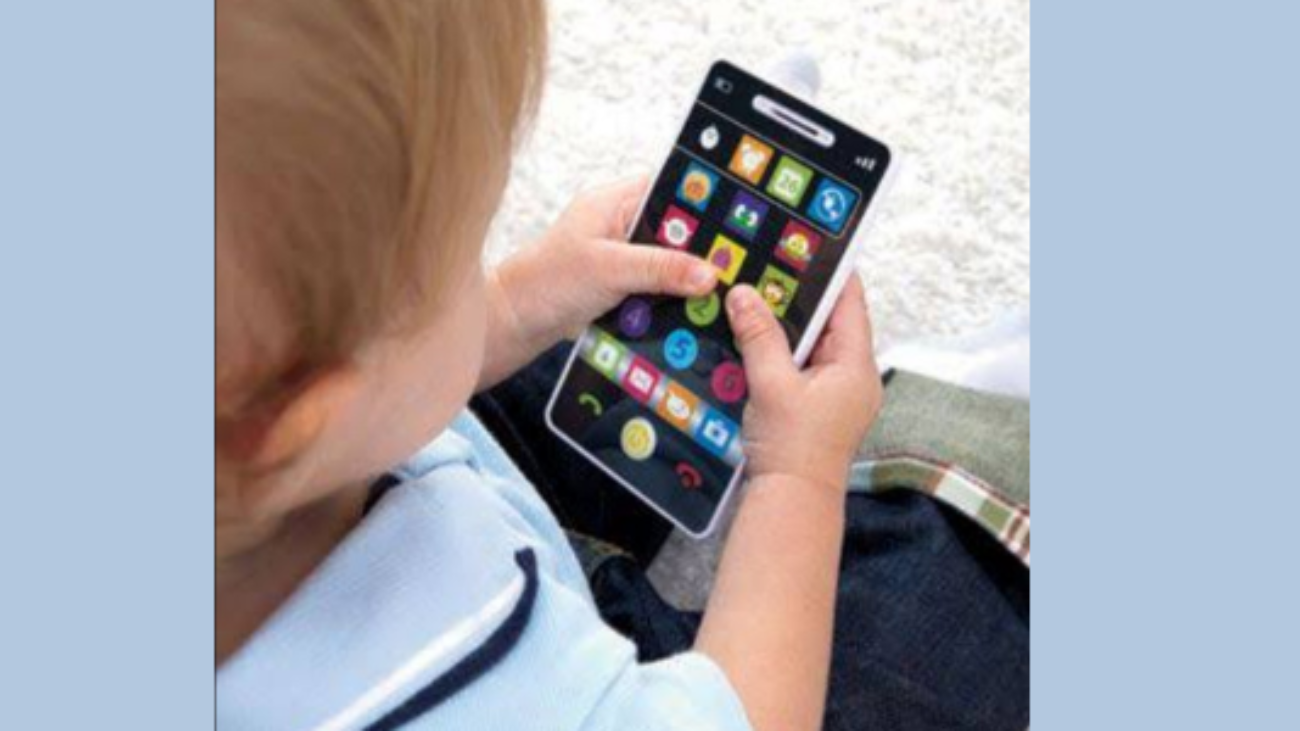Mobile Learning for Tiny Tots
The debate for and against e-learning for early learners has been going on since the time it was discovered that ICT and internet together had a great potential to facilitate learning. While e-learning was eagerly taken up by schools for their middle, secondary and senior levels, they were hesitant to consider it as an alternate mode of learning for the pre-primary and early primary learners. The undisputed logic that prolonged screen time had the potential of adversely affecting the health of tiny-tots due to inactivity and eyestrain, was a prime factor against the seemingly frivolous arguments of attractive content, interactive mode, lifelike visuals, time saving, flexible and cost-effective education as projected by online learning. Therefore e-learning for 2 to 6-year olds remained limited to showing videos of rhymes, stories, cartoons etc. having no more than entertainment value for the children and as time-filler for teachers.
Although the e-learning industry world over took serious cognizance of counter arguments against e-learning and worked around these challenges through research and innovation to produce improved e-content, in India most early-teachers have been reluctant to seriously explore its potential and integrate it in their lesson plans. They continued teaching in the traditional face-to-face mode to provide a robust learning experience for the cognitive, linguistic, physical, aesthetic and socio-emotional development of the early learners.
The status quo has been maintained till date. However now with schools closed indefinitely due to the spread of Coronavirus and COVID-19 pandemic there is a need to explore learning options away from school for intellectual sustenance and stimulation of early learners rather than banishing them for this long period of idleness till the schools reopen in a distant future.
Web-based video-conferencing platforms such as Google Hangout, Zoom, MS Teams, Webex etc. are being used by schools for on-line interactive sessions for higher classes other than the pre-primary and early-primary. This option is worth exploring for early learners too as by using this technology teachers can reach the early learners and their parents with a plan to help them to organise a fun-filled learning program at home.
It Works for the Learner in more Better way
e-learning finds its strongest support from the fact that it enables all learners to learn at their own pace which is usually a luxury that’s impossible to provide in a classroom full of eager, energetic learners all vying for teacher’s attention. As a result, the ones who learn fast waste time waiting for others to finish and the ones who take more time struggle to catch up, experiencing inferiority complex and boredom from stress and self-esteem issues.
A rich repository of fun-filled, entertaining, engaging age-appropriate audio and video resources is available on-line to supplement teachers’ efforts. Surprising as it may seem to most people, e-learning allows personal attention in the form of a variety of drills on a single topic for the learners to completely understand and master the topic at their own pace before moving on to the next.
The immediate feedback feature built into the software is encouraging, diagnostic and effective as it lets them retrace their steps and rethink the problem to attempt it again and eventually ace it with no peer pressure or time constraint. The e-rewards in the form of stickers, e-gold coin and stars become their most cherished medals of honour.
Learning Plans & Strategies
Early teachers should prepare a daily e-Learning Plan which is a combination of-
- One online class per day with learners for not more than an hour.
- Follow -up activities to be done by parents at home
- Topic-wise e-content (downloadable or links) for practice by the learners under parental supervision. These could be rhymes to sing along, learning games, animated stories, drills for math and spellings, quizzes and worksheets that can be done online or downloaded and printed.
The teacher’s online interaction with young learners will comprise of sharing expected behaviour during online class, lesson for the day, and a brief description of the activities which the parents will do with their child. These activities should be staggered throughout the day to keep the learners gainfully occupied. Parents must be present during all online sessions.
Managing the Challenges
Concerns regarding prolonged screen time are undeniably genuine and we need to work around them by enlisting parents as co-educators. This can be done with videos of short tutorials for parents on the basic assumptions and beliefs on which early childhood education has been postulated e.g. parents will need this support to understand how to play with children so that they learn, what are the benefits of letting children assist them in simple household tasks and how things at home can be used for learning. Teachers can also help parents realise that the whole experience of spending quality time to teach their child and patiently responding to their queries and concerns can result in an intangible but deep bonding which is emotionally rewarding for children as well as parents.
By -ASSISTANT PROFESSOR Ms. Kumud Misra
DEPARTMENT :B.Ed
UCBMSH Magazine – (YouthRainBow)
UCBMSH WEBSITE – Uttaranchal (P.G.) College Of Bio-Medical Sciences & Hospital
UCBMSH B.ED WEBSITE – Uttaranchal College of Education
UCBMSH NURSING WEBSITE – College Of Nursing UCBMSH
REGISTRATION – Apply Online
For any queries & Admission Call at:8192007206, 8192007210, Or mail us at: admission@ucbmsh.org









